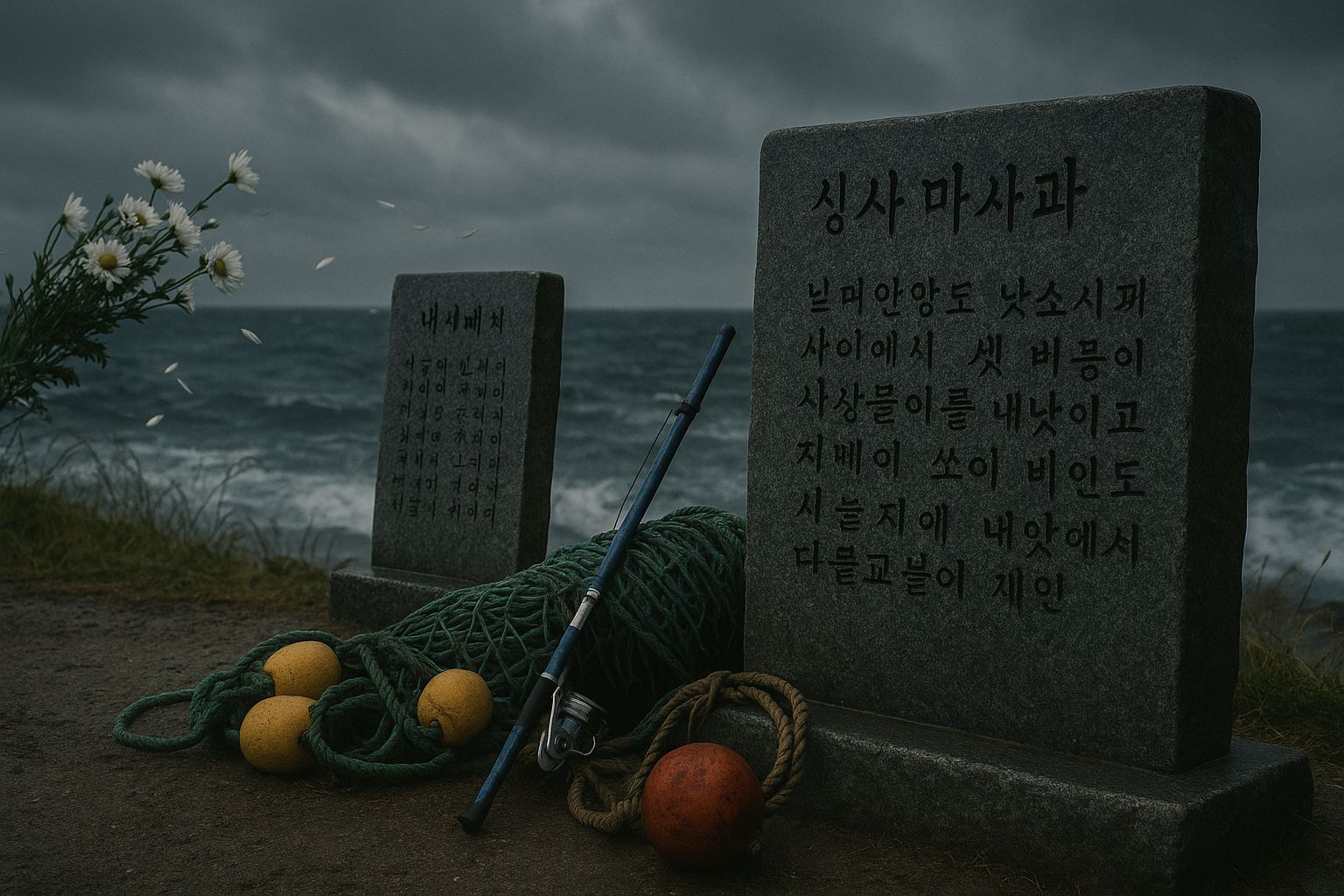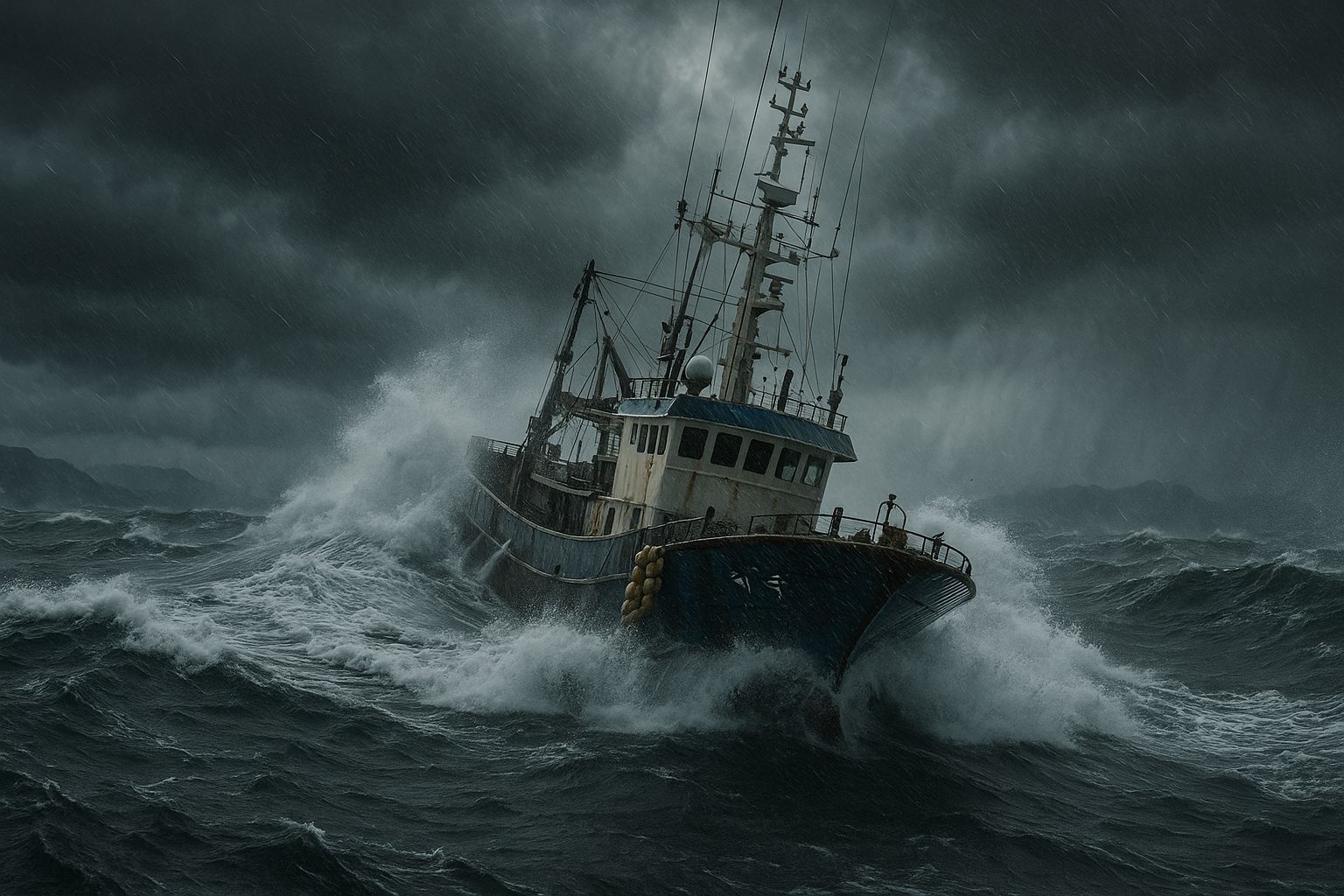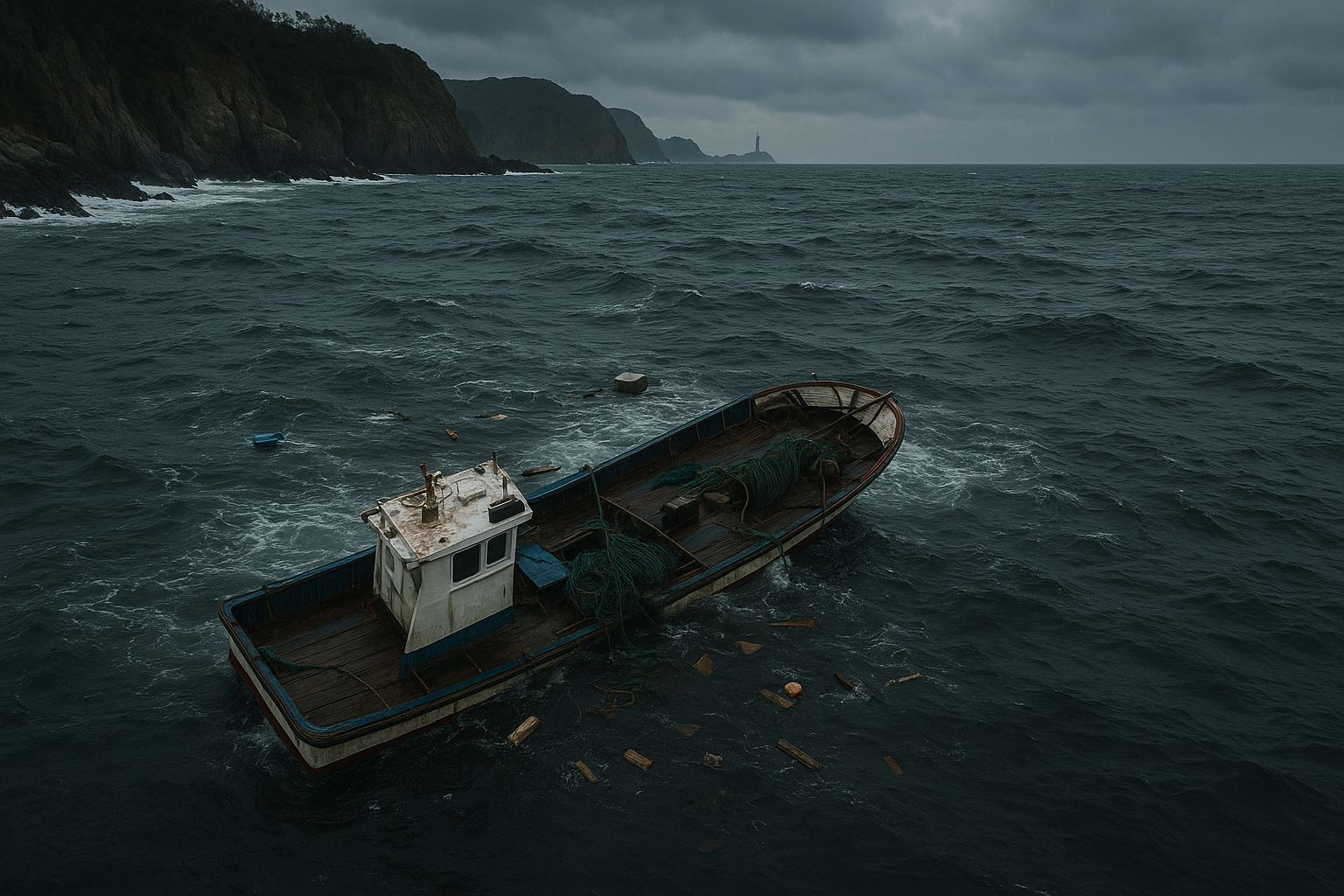- Green Glow
- Posts
- 🌱 The Link Between Climate Change and Deadly Fishing Accidents in South Korea ⚠️⚓
🌱 The Link Between Climate Change and Deadly Fishing Accidents in South Korea ⚠️⚓
Climate change is reshaping South Korea’s seas — fueling storms, warming waters, and driving fish away. Discover how these changes are leading to more deadly fishing accidents and threatening the nation’s coastal communities.
For generations, the sea has sustained South Korea’s coastal communities — feeding families, fueling economies, and defining traditions. But in recent years, it has also begun to claim more lives. The rising death toll among South Korean fishermen has become a grim reminder that climate change isn’t a distant threat — it’s already here, reshaping livelihoods and taking lives.
In 2023 alone, 164 people were killed or went missing in accidents at sea, a staggering 75% increase from the previous year. The majority were fishermen whose boats sank or capsized in increasingly volatile conditions.
Table of Contents

A Surge in Fatal Accidents at Sea
The South Korean government has sounded the alarm. Investigations into these maritime tragedies have identified several interlinked factors — from aging fleets and undertrained crews to a changing climate that is making the country’s seas more dangerous than ever.
According to government data, marine weather warnings around the Korean Peninsula rose by 65% between 2020 and 2024, alerting fishermen to gales, storm surges, and typhoons. These extreme events are not isolated — they reflect a worrying trend of intensifying weather patterns linked to global warming.
Warming Waters, Stronger Storms
Between 1968 and 2024, the average surface temperature of South Korea’s seas rose by 1.58°C — more than double the global average increase of 0.74°C.
Because these seas are relatively shallow, they absorb and retain heat more quickly, fueling stronger winds and more frequent whirlpools. The result is a deadly combination: tropical storms and sudden gusts that small fishing boats are ill-equipped to handle.
These rapid shifts in weather are making navigation unpredictable. “Whirlwinds pop up suddenly,” says Jeju fisherman Hong Suk-hui. “We are convinced it’s down to climate change.”
Vanishing Fish, Greater Risks
As the waters warm, marine ecosystems are shifting too. Iconic fish species like hairtail and anchovy — once abundant in Korean waters — are migrating further south to cooler seas.
Fishermen, desperate to maintain their income, are now forced to venture deeper into open waters, farther from shelter and safety. With longer journeys come greater exposure to storms and rising fuel costs that cut into profits.
In Jeju Island, owner Kim Seung-hwan said his crews now travel as far as Taiwan in search of hairtail. “If we stayed closer to shore, it would be safer,” he explained, “but to make a living, we have to go farther out.”

A Crisis Made Worse by Aging Crews and Poor Training
Climate change is not the only factor at play. The fishing industry itself is aging — nearly half of South Korea’s fishermen are now over 65. Many rely on migrant workers from Vietnam and Indonesia who often lack proper safety training or communication skills.
Combined with outdated boats and minimal safety equipment, this creates a perfect storm. As environmental researcher Woojin Chung notes, “When you combine more extreme weather with the pressure to travel further, increased fuel costs, and reliance on untrained foreign labor — you have a higher chance of disaster.”
Human Stories Behind the Statistics
Behind every number is a family torn apart.
When a trawler sank near Yeosu in February 2024, 10 crew members died, including 63-year-old veteran fisherman Young-mook. He had been planning to retire but was called in for one last shift. His daughter Ean still struggles to accept it.
“It’s too easy to blame climate change,” she said. “Owners still have a responsibility to assess risks and maintain their boats. Our loved ones can’t be replaced.”
Government Response: Safety and Sustainability
South Korea’s authorities are now trying to prevent more tragedies. A new government taskforce is recommending measures such as:
Mandatory life jackets for all crew members
Safety ladders and modernized boat designs
Training for migrant workers
Improved real-time weather alerts and local forecasting systems
Additionally, the government is experimenting with creative economic support — paying fishermen to catch jellyfish (to clean up the seas) and offering loans to struggling squid fishermen to help them retire with dignity.
A Future Under Threat
The UN’s Food and Agriculture Organization (FAO) warns that South Korea’s total fish catch could decline by nearly one-third by 2100 if carbon emissions continue unchecked.
For fishermen like Captain Park Hyung-il, who once filled 100 baskets of anchovies a day and now struggles to fill two, the reality is heartbreaking. “The sea is a mess,” he said. “Nothing makes sense anymore.”

Conclusion
What’s unfolding off South Korea’s coasts is not just a maritime tragedy — it’s a warning. Climate change is amplifying existing vulnerabilities, and without decisive action, the nation’s proud fishing heritage may vanish beneath the waves.
The story of South Korea’s fishermen is the story of humanity’s struggle against a changing planet — a reminder that those who live closest to nature often bear the earliest and harshest consequences.
FAQs
Why are fishing accidents increasing in South Korea?
Accidents are rising due to stronger winds, unpredictable storms, aging boats, and crews venturing farther out as fish migrate due to warming seas.
How much have South Korean seas warmed?
Between 1968 and 2024, the average surface temperature rose by 1.58°C, more than twice the global rate.
What fish species are most affected?
Hairtail, anchovy, and squid populations have declined sharply — squid catches alone have fallen over 90% in a decade.
What is the government doing to help?
Authorities are enforcing safety standards, improving weather warnings, subsidizing jellyfish removal, and providing loans to struggling fishermen.
What does the future hold?
If emissions continue at current levels, the FAO predicts that South Korea’s total fish catch will drop by nearly a third by 2100, devastating coastal livelihoods.
You May Also Like
🌱 Asia Heats Up: Why the World's Largest Continent Is Warming Twice as Fast 🌏🔥
🌱 Half of Americans Still Breathe Unhealthy Air—Here's Why It Matters 🌬️😷
🌱 Why Azerbaijan's Renewable Energy Potential Remains Untapped 🛑💨
🌱 How Drug Pollution Is Secretly Changing the Way Salmon Survive 💊🐟
🌱 Burning Up & Burning Out: The Data Linking Climate to Energy Demand 🔥⚡
External Links
Secret Energy Department "hit list" targets renewable energy industry
Renewable energy jumps to new high, powered by China solar boom
Trump is tackling every ‘emergency’ except the important one — climate change
World climate report warns of growing risks to lives, economy and planet
How do renewable energy mandates contribute to your electric bills? Follow the money
Follow Us:
X: https://www.x.com/greenglownews
Youtube: https://www.youtube.com/@greenglownews
Instagram: https://www.instagram.com/greenglownews
Sponsored Links